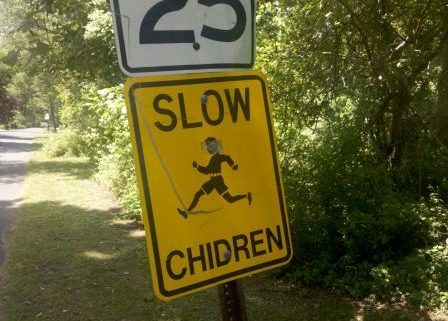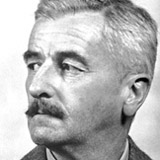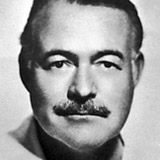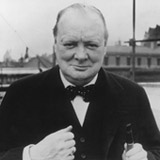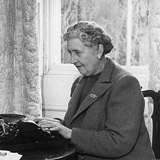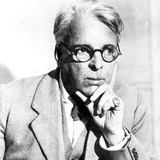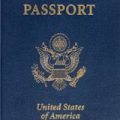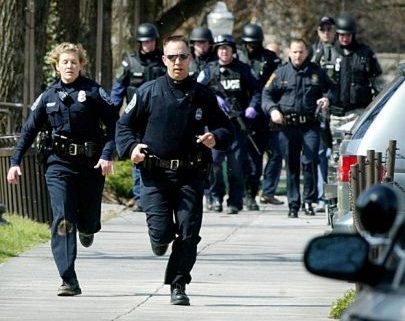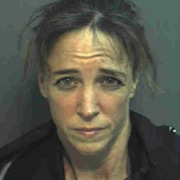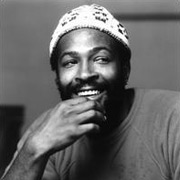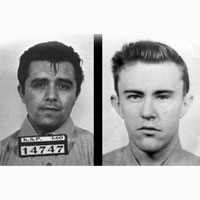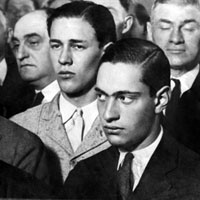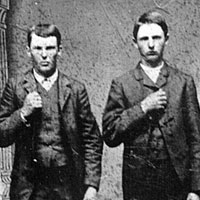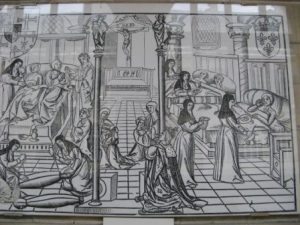Prisons have long been at the center of much social, political, and even philosophical debate. What rights prisoners should have, what works to rehabilitate them, and how much taxpayer money should go into supporting prisons have been some of the key issues in both recent years and throughout history. Prison libraries touch on all three of those issues, and in many places, what reading material prisoners have access to and whether they’re permitted to read at all has been a hot-button topic, bringing up quite a bit of fervor on both sides. While some might think access to books should be a right, many people would disagree, or would point out that libraries can be costly and could be a burden on a system that’s already struggling with the costs of providing basic care for inmates.
Yet of all the liberties afforded to prisoners, access to a library, and the materials and classes it provides, can be one of the most useful in preparing them for life outside of prison. The majority of inmates in America’s prisons have low levels of education and some can barely read, write, or use a computer. These are all skills that are necessary to make it on the outside without returning to a life of crime, and prison libraries offer inmates the chance to learn all of these things and more. While prison libraries aren’t a panacea for what ails America’s prison system, they do offer some important benefits that are well worth considering. We’ve listed a few here that just might change how you think about prison libraries.
1. Inmates who participate in prison education programs are less likely to end up back in prison
Perhaps one of the best ways libraries benefit prisoners is by helping make it less likely that they’ll end up back in prison again. Studies have shown that education helps to reduce rates of recidivism, and libraries can play a big part in that, with access to books, educational programs, and computer training. A study of inmates in 2003 found that participation in education programs while in prison helped reduce rates of re-arrest, re-conviction, and reincarceration by significant amounts, with only 21% of those who participated in education programs ending up back in prison versus 35% of non-participants.
2. Many library programs can also benefit inmates’ families
Prison libraries don’t just offer those who are incarcerated a chance to read; they also encourage inmates who are parents to share books with their children. For example, the Indiana State Library has a program called Read-to-Me which provides picture books and children’s readers to inmates. Inmates work with library staff and volunteers to learn to read a book of their choosing well enough to make a recording, which they can send to their children, grandchildren, or other relatives. Other programs all over the U.S. work to send out books to children of inmates or promote family literacy, helping change not only the lives of the inmates but of future generations as well.
3. Prison inmates who read newspapers and magazines, books, or letters and notes have higher average prose and document literacy than prison inmates who never read
The library provides access to a wide range of written materials that can help inmates improve their literacy skills or keep existing skills sharp. Those who used the library to read just about anything, from books to newspapers, regardless of the frequency with which they read, were found to have higher literacy levels than their counterparts who never took advantage of the library’s collections. This may be due to inmates with higher literacy levels being more inclined to take advantage of library resources, but others may use the library to improve poor literacy levels, as overall education and reading proficiency tend to be low among prison populations.
4. Prison inmates who use the prison library regularly have higher average literacy rates than prison inmates who don’t
Libraries are a place where people can go to expand their minds, prisoners included. A 2003 study on literacy behind bars found that prison inmates who used the library daily had higher average literacy when reading prose and documents than prison inmates who used the library less frequently, whether they went weekly, monthly, or never at all. While those who used the library daily had the biggest difference in language literacy levels, prison inmates who used the library at any rate had better literacy when it came to math than prison inmates who never used the library.
5. Libraries provide inmates with a productive way to spend their time
Even when prisoners are participating in work programs, getting exercise, or doing other activities, there’s a lot of downtime in prison. Libraries offer prisoners a chance to use that time to read, study, and hopefully, learn. A study found that in prisons with libraries, a good portion of inmates take advantage of materials. Of those who use the library, 43% were found to read newspapers and magazines daily and 50% read books daily.
6. Many studies report inmates feeling increased self-confidence and self-worth after gaining literacy skills
Not being able to read, or not being able to read well, is a source of shame for many adults, in prison or not. Prison libraries offer inmates a chance to get the resources they need to practice reading, and with the help of librarians, educators, and volunteers, many are able to make big strides in their reading abilities. A case study conducted in 1993 found that reading and writing while in prison, with the help of a tutor, helped inmates to better understand themselves, legitimize their voice, and feel more self-confident.
7. Prison libraries that offer inter-library loans give inmates access to virtually any book out there
Whether inmates want to learn about law or read the classics, many find that it’s easy to do through prison library book-loaning programs. Some communities treat prison libraries like any other library in their system, and allow prisoners to request and get just about any book (though some restrictions may be in effect, depending on the state and discretion of the librarian). Since many prison libraries can’t afford to build large collections of their own, this is a cost-effective way to improve the quality of the material inmates can read and offers a freedom of information that many see as a basic human right.
8. Libraries are also a place where inmates can learn computer skills
For better or worse, inmates in America’s prisons can’t make use of the Internet, which can be a big problem for many when they go to look for a job after release. While they can’t take advantage of the information and training the web has to offer, there are many other opportunities to use computers in prison libraries, and many inmates take full advantage. With access to CD-ROM training programs, inmates can learn how to use computer programs, navigate the web, or may even be able to take courses that can help them in finding work. In Maryland, inmates can check out a program called Discovering the Internet, which helps to bridge the digital divide many long-term inmates may have upon release. The program is not only popular with Maryland prisoners, but has been requested at prisons all over the U.S.
9. Inmates can use the library to take an active role in their own legal matters
While it might be a stereotype that many prisoners spend hours in the library looking through law books and legal publications to wheedle their way out of jail, it’s not entirely unfounded nor a bad thing. Giving inmates a chance to learn about the law can help ensure that they’re being treated fairly and justly, which, sadly, may not always be the case if inmates are low-income or lack the education to understand the process that landed them in jail in the first place. Some inmates have even earned law degrees while in prison, and a select few have gone on to use their knowledge to successfully get their convictions overturned, neither of which they would have been able to accomplish without the help of a prison library.
10. Prison libraries can help improve inmates’ mental well-being.
While prison is a punishment, our constitution has mandated that it shouldn’t be one that’s cruel or unusual. The confinement, the threat of violence, the loneliness, the lack of purpose; these factors can all take a toll on the mental health of prisoners, but books can help. Prisoners can read to learn or as a pleasurable escape from the often monotonous and sometimes violent reality that surrounds them. Books can provide inspiration, guidance, and perspective in a way that few other things can, and for many inmates that may make all the difference when it comes to quality of life. In many prisons, even inmates who are sentenced to solitary confinement are allowed a few books to read in order to pass the time.
11. Libraries act as gateways to learning for many inmates
A study of prison education and library programs concluded that reading was not only a source of pleasure for inmates but also a “gateway to learning, information, inspiration, and relaxation.” With numerous studies drawing direct correlations between education and reduced rates of recidivism, anything that gets prisoners to be more open to the idea of learning is a good thing. Librarians who work in prisons often work hard to create collections that cater to the needs and interests of their particular population, and it’s not all just for fun. Books may start off as a source of escape for many in a figurative sense, but may lead to learning that can literally help them escape from a life of crime and future imprisonment. One inmate was quoted as saying, “My library has helped me find the courage and strength, not only to overcome my incarceration but also to strive for a more honest and productive future.”
12. Many inmates who read little on the outside become hooked on books in prison
Whether you’re young, old, or in between, there is no bad time to develop a love of reading. Many prison librarians report that some of their most reading-crazed patrons actually read little to nothing when they were free, but with little else to do, turn to books as a source of entertainment, education, and escape. You only need to read through a few of the entries on this prison book program blog to see how important libraries are to prisoners, even those who never thought they’d spend so much of their day reading. Many will take their acquired love of books, and the writing skills they’ve gained along the way, with them into life outside of prison.
13. Reading can help inmates make connections with the outside world
A prison library offers inmates several ways to stay connected to life on the outside, which can help give them a sense of stability and normalcy. Aside from the bars on the windows, prison libraries function identically to those outside and allow prisoners to make choices of their own accord, something that is virtually non-existent in many other aspects of their daily lives. Former prisoners, like Mark Knudsen, report that libraries enabled them to pursue their educational and recreational interests, make connections with the outside world through literature, and achieve “astonishing growth in learning and developing skills.” Libraries not only provide a sense of continuity with the outside world but can also help inmates stay in touch with modern life outside the prison walls and gain new understandings about human interactions, society, and themselves.
14. Libraries don’t rehabilitate all prisoners, but some do take away amazing lessons
In the book Reading is My Window: Books and the Art of Reading in Women’s Prisons, readers can hear from a wide range of women in prison on the role books and the libraries that provide them play in their lives. Some complain about the lack of good resources and proliferation of trashy romance novels while others feel that reading in prison has made a major difference in their lives and helped them to grow as people and perhaps even prepare themselves a bit for life outside of prison. While prison libraries may not be able to change all prisoners from career criminals into upstanding citizens, they do offer opportunities and open doors that many prisoners wouldn’t have access to otherwise.
15. There are many stories of people who turned their lives around through reading and writing in prison
While all of us hope we never end up in jail, for some, it may be the best thing that’s ever happened to them. Prison can be the wake-up call that finally gets their life on track. One famous example is Malcolm Little, better known as Malcolm X, who ended up in jail at the age of 26 after a tumultuous and troubled youth. Little only had an eighth-grade education when he entered prison and could barely read and write, a fact which frustrated him greatly. Instead of giving up, he got a dictionary and forced himself to learn the words, eventually going on to read many of the books in Norfolk Prison’s well-stocked library. While many may disagree with the politics of Malcolm X, it’s undeniable the impact having access to a library made on his life, turning him from a troubled youth into a leader in the African-American community.
*Today’s blog brought to you courtesy of www.bestcollegesonline.com



